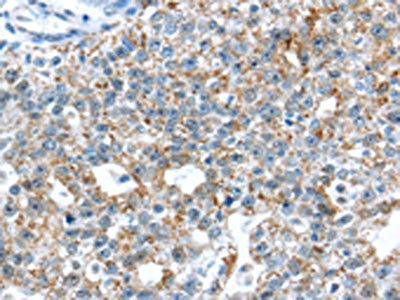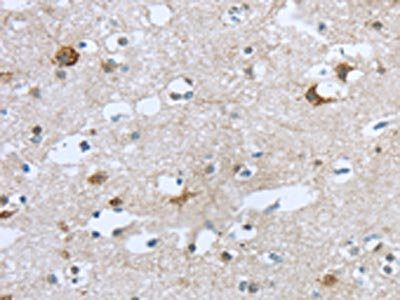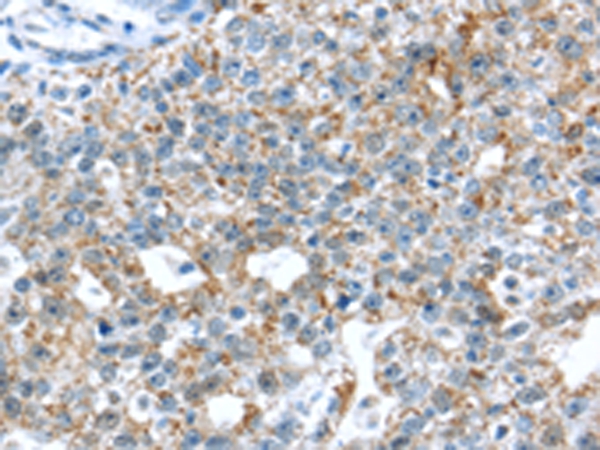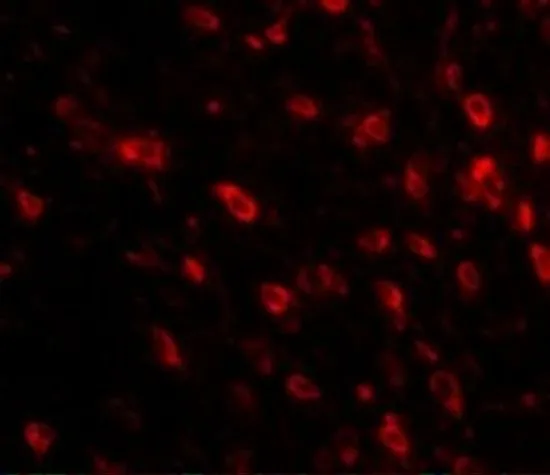
The image on the left is immunohistochemistry of paraffin-embedded Human breast cancer tissue using CSB-PA068526(TTBK1 Antibody) at dilution 1/35, on the right is treated with synthetic peptide. (Original magnification: x200)
TTBK1 Antibody
CSB-PA068526
ApplicationsELISA, ImmunoHistoChemistry
Product group Antibodies
ReactivityHuman
TargetTTBK1
Overview
- SupplierCusabio
- Product NameTTBK1 Antibody
- Delivery Days Customer20
- ApplicationsELISA, ImmunoHistoChemistry
- CertificationResearch Use Only
- ClonalityPolyclonal
- ConjugateUnconjugated
- Gene ID84630
- Target nameTTBK1
- Target descriptiontau tubulin kinase 1
- Target synonymsBDTK, tau-tubulin kinase 1, brain-derived tau kinase
- HostRabbit
- IsotypeIgG
- Protein IDQ5TCY1
- Protein NameTau-tubulin kinase 1
- Scientific DescriptionTTBK1 (tau tubulin kinase 1), also known as BDTK (brain-derived tau kinase), is a 1,321 amino acid protein that contains one protein kinase domain and belongs to the serine/threonine protein kinase family. Localized to the cytoplasm and expressed at high levels in brain and at lower levels in testis and spinal cord, TTBK1 functions as a serine/threonine kinase that can phosphorylate Tau (a protein involved in tubulin polymerization) on threonine, tyrosine and serine residues. Specifically, TTBK1 uses divalent cations, such as magnesium and manganese, to catalyze the ATP-dependent transfer of a phosphate group onto Tau, creating a phosphoprotein and ADP. Phosphorylation of Tau causes its aggregation and subsequent loss of function, suggesting an important role for TTBK1 in the control of tubulin dynamics.
- ReactivityHuman
- Storage Instruction-20°C or -80°C
- UNSPSC41116161






